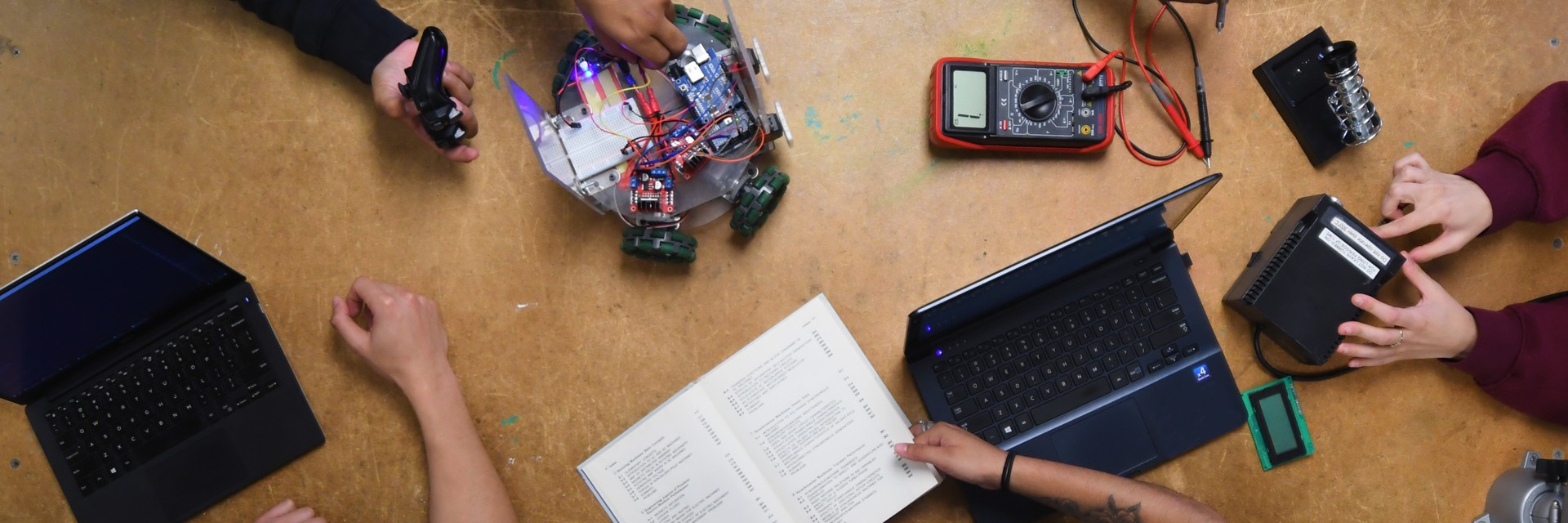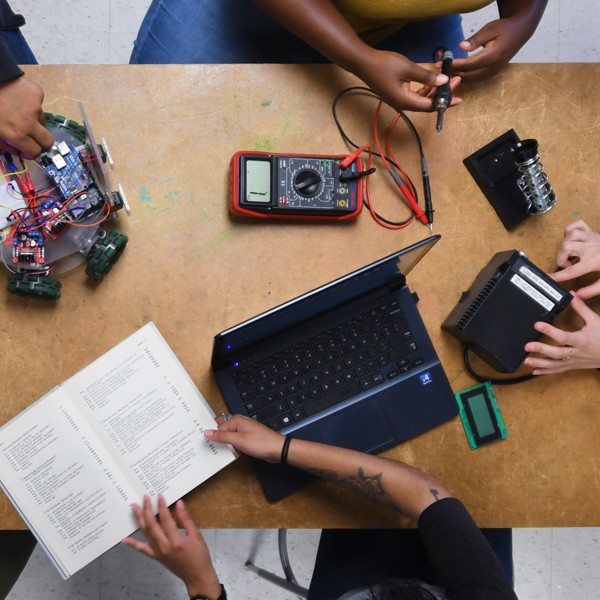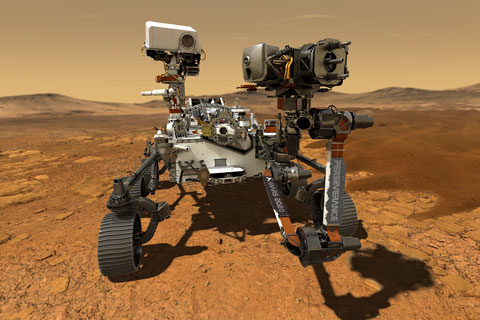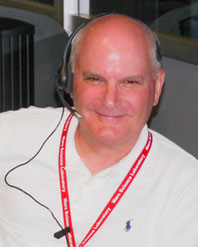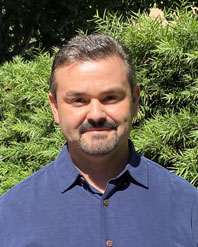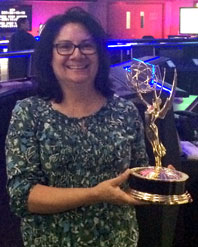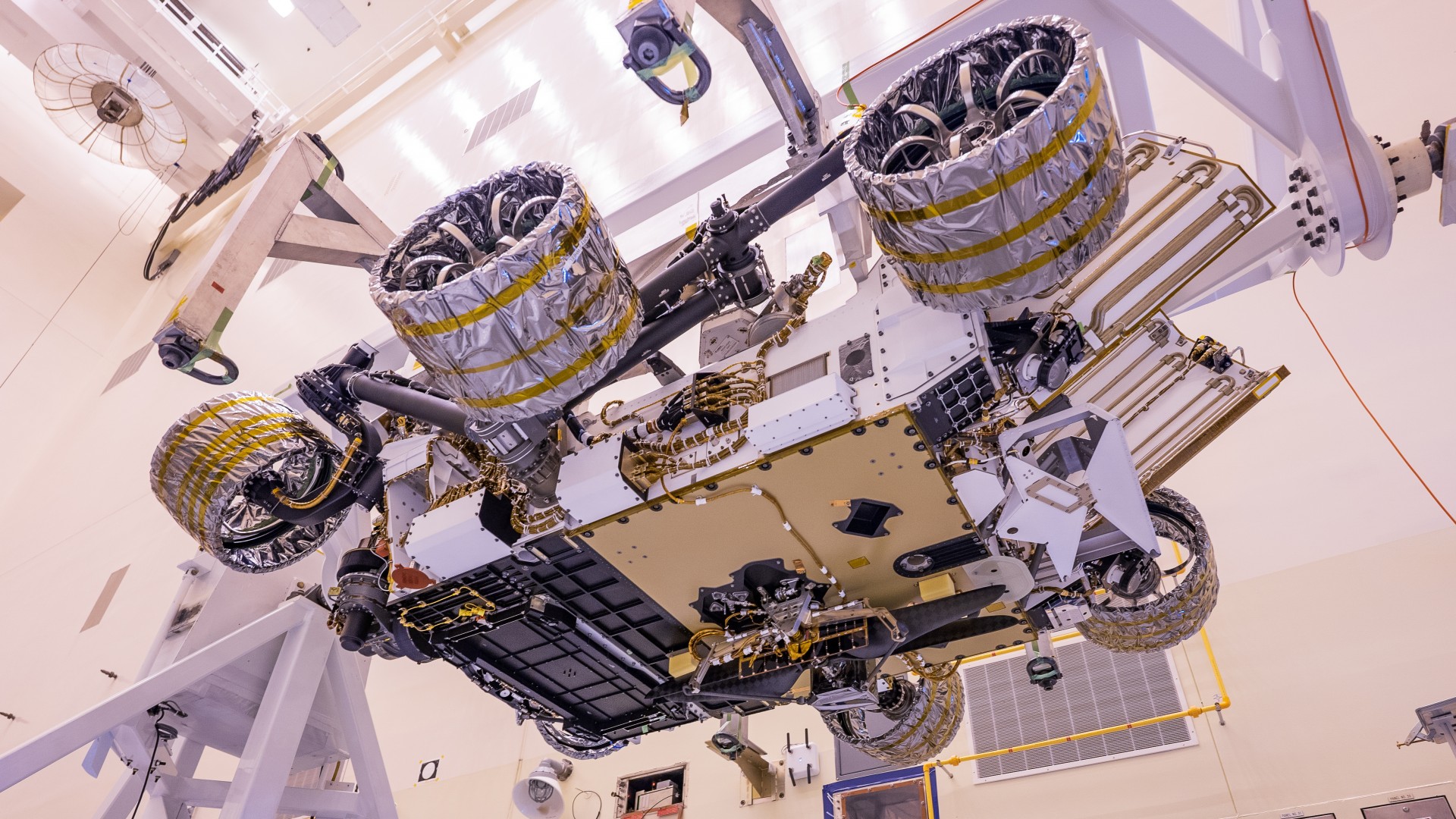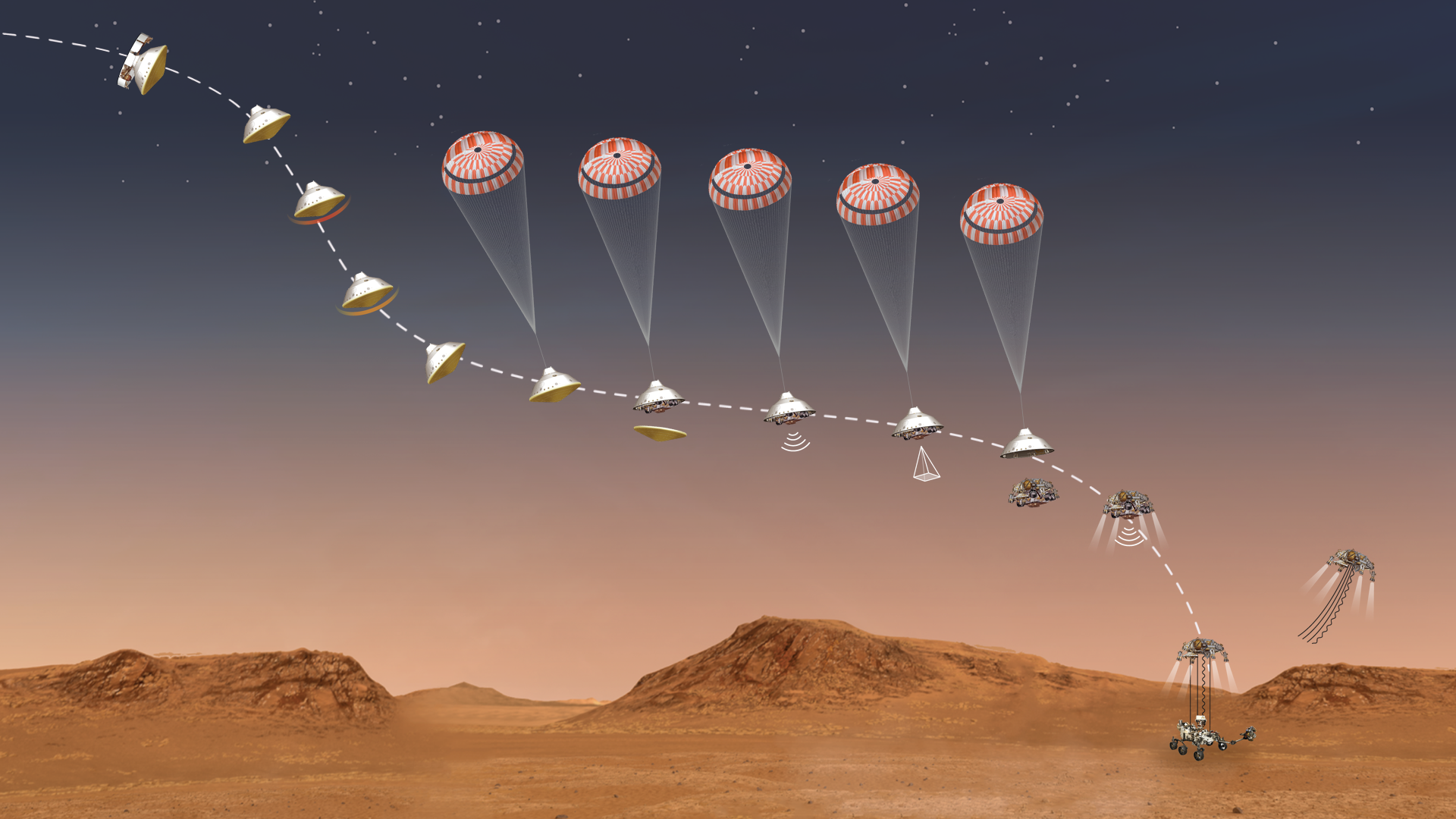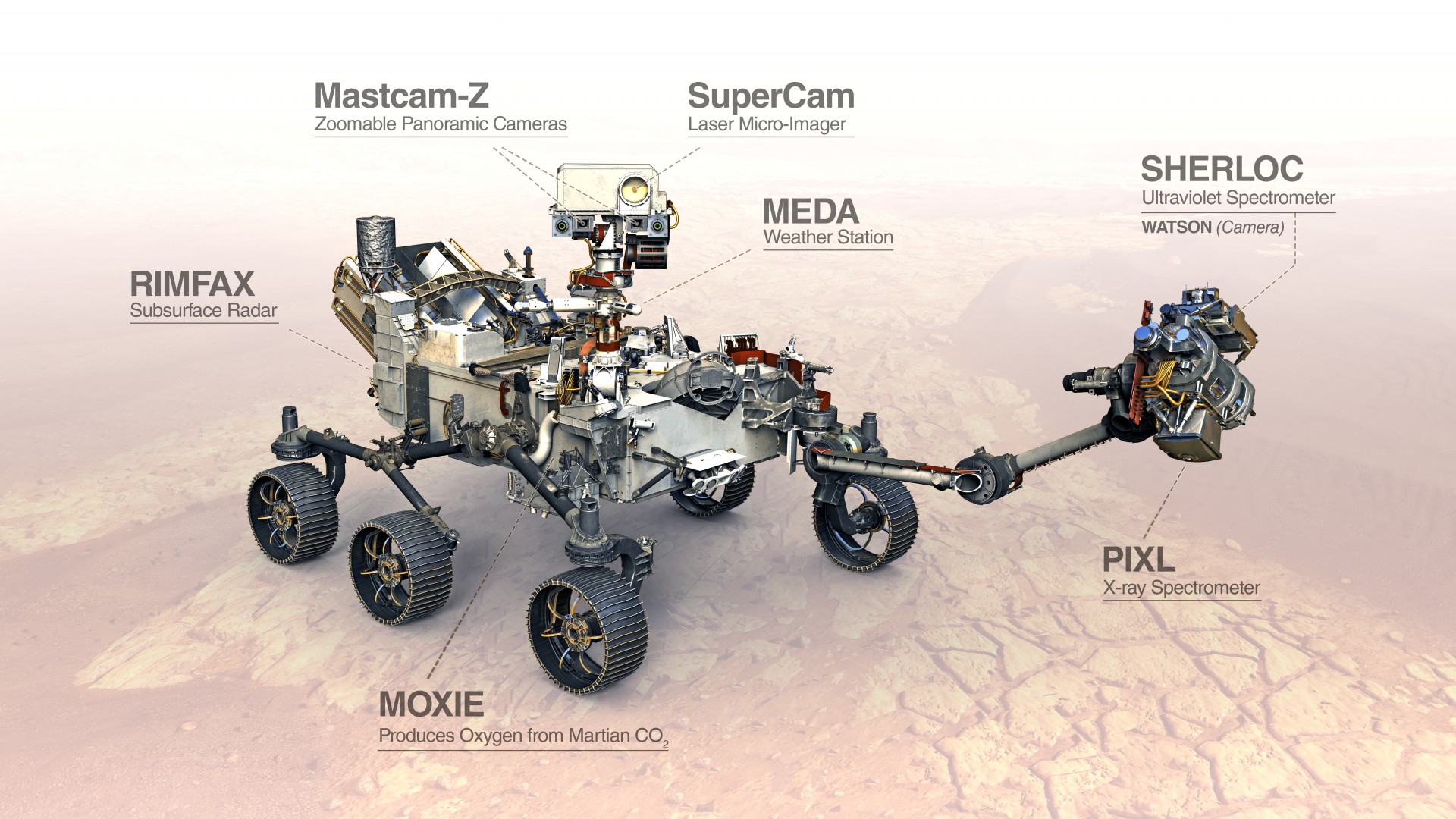Photo & Illustration: NASA/JPL-CalTech: Perseverance on Mars
What’s It Like Having a Ringside Seat at the Greatest Show Off Earth?
NASA’s Mars 2020 Perseverance rover is just days away from landing on Mars. On February 18, 2021, after a 300-million-mile journey that began on July 30, 2020, the rover will initiate a seven-minute descent that will include a supersonic parachute inflation and the first autonomous guided landing on Mars. NASA’s Jet Propulsion Laboratory (JPL) in Pasadena, California built the rover and manages the mission.
Of the 1,200 or so JPL scientists and engineers who’ve worked on the mission over the years, it’s estimated that several dozen are alumni of Cal State LA’s engineering or computer science programs. Three were interviewed for this article.
NASA’s exploration of Mars dates back to 1965, when Mariner 4 performed a flyby of the planet. Since then, there have been two additional flybys, seven successful orbiters, and eight landings. All Mars missions seek to expand our knowledge of Mars, prepare for human exploration of the planet, and search for answers to questions about the origin of life on Earth and whether there is now or ever was life on other planets. However, every Mars mission has its “firsts.” Mars 2020 is no exception:
- According to JPL, the Perseverance rover is the “biggest, heaviest, cleanest, and most sophisticated robotic geologist” ever launched into space.
- For the first time, Perseverance will collect rock and dust samples and cache them until they can be returned to Earth for deeper analysis than can be achieved in a rover lab. Two future joint NASA and European Space Agency missions are planned to retrieve the samples.
- The mission includes a planned technology demonstration of a four-pound helicopter named Ingenuity—the first-ever attempt at powered flight on another planet. If successful, future missions could include an aerial dimension.
Photo & Illustration: NASA/JPL-CalTech (L to R)
Mars Helicopter and Perseverance Rover, Perseverance Rover's Entry, Descent and Landing Profile, Science Instruments on NASA's Perseverance Mars Rover
For Arthur Amador, Sergio Valdez, and Annabel Kennedy, the landing of Perseverance will mark another major milestone in careers they clearly love. All three were hired by JPL while either undergraduates or right after graduation and have spent their entire careers there.
Amador, the son of Cuban immigrants who came to California in the mid-1950s, was inspired to pursue a technical degree by the first Viking probe’s arrival at Mars in 1976, while he was still in high school. His hope was to get a job at JPL, which he did in 1987. Mars 2020 is his fourth Mars mission. With each one, he has experienced firsthand how each Mars mission builds on top of previous ones. “With each new mission, we learn lessons that advance the next one,” says Amador.
For example, Amador played a key role in the Curiosity Rover Mission that landed on Mars in 2012. Part of its scientific mission was to answer the question: Did Mars ever have the right environmental conditions to support life? Early on in its mission, Curiosity gathered samples at its landing site, Gale Crater, for on-board analysis and found evidence of past liquid water. This meant the area could have been habitable.
Perseverance will take the next natural step. Says Amador, “Perseverance will try to find samples of materials like those where life formed on Earth. It will land in the Jezero Crater because it looks like it was once flooded with water. Its scientific mission is to identify and acquire these materials, hermetically seal them in tubes, and leave them where they are so they can be retrieved by a future mission and taken back to Earth for a deeper analysis that might detect the presence of life on Mars.”
Adds Amador, “JPL is constantly thinking ahead, planning for future missions, which means you have to make decisions about things you might need sometimes 10 years in advance. It’s this continuity from mission to mission that lets JPL constantly push the envelope.”
There have been many moments in Amador’s career that stand out. But one he remembers most is the landing of the rover, Spirit, on Mars in 2004. Two rovers, Spirit and Opportunity, had been launched a few weeks apart, destined for different landing sites on opposite sides of Mars. Both rovers were inside landing crafts equipped with parachutes and protected by airbags. Spirit was scheduled to land in a crater believed to have held water at one time.
Says Amador, “Spirit landed and began bouncing along the surface of Mars on its airbags. It rolled, stopped, started, and began rolling again for about 15 meters, and then rolled over an edge into a small crater. When it stopped moving, the airbags were deflated, and the landing craft opened. Spirit rolled out and began taking what turned out to be the most beautiful, high-resolution, full-color, panoramic images ever taken of the Martian landscape. I was awestruck. But the landing was a nail-biter.”
Sergio Valdez grew up in East Los Angeles and attended Garfield High School, becoming the first person in his family to go to college. At Garfield, he had the good fortune to take a calculus class from Jaime Escalante, the legendary teacher whose classroom and rigorous teaching methods were depicted in the 1988 movie, Stand and Deliver. “Mr. Escalante’s class gave me skills, confidence, and dignity,” says Valdez. “But I was absolutely clueless when it came to figuring out what I wanted to do.”
Nevertheless, Valdez’ name ended up on a list when JPL came to Garfield to recruit students for summer jobs. Valdez was hired then and continued to work summers at JPL while earning an undergraduate degree in Mechanical Engineering at Cal Poly San Luis Obispo. Upon graduation, he was hired by JPL and “hit the ground running. I knew people and processes and felt comfortable on day one,” says Valdez.
While working at JPL, Valdez continued his education, earning two graduate degrees, including a master’s in Mechanical Engineering from Cal State LA. “I knew I wanted to get a master’s degree,” says Valdez. “I chose Cal State LA because I’m from the neighborhood. Walking across the campus, it felt like home.”
At JPL, Valdez has worked in different engineering roles for previous Mars missions. For Mars 2020, Valdez leads the team that, among other things, designed, built, and tested Ingenuity, the helicopter that will be flown on Mars. “Mars is a challenging environment for powered flight,” says Valdez. “The atmosphere is 100 times thinner than on Earth. We had to design a helicopter that was as light as possible, but also as powerful as possible. It had to fold up for storage on the underside of the rover. And it had to be able to make decisions and act on its own. With a 20-minute delay in communications between Earth and Mars, we can’t manually control it from Earth.”
Notes Valdez, “All of this was engineering work. But because we needed to think differently, we didn’t try to do everything on our own. Instead, we brought in outside helicopter experts and combined our skills and expertise with theirs.”
A key aspect of the non-traditional design is the helicopter’s battery pack. Battery-powered vehicles usually carry them. Instead, the battery pack powering Ingenuity is designed into the body of the helicopter, reducing its size and weight.
Last summer, the helicopter was tested in a thermal vacuum chamber that created the equivalent of a Martian atmosphere. But the nature of space science and engineering means that Valdez and his team won’t know if they were successful until the day of the test flight, which will occur 30 to 90 days into the mission.
Says Valdez, “We’ll have to wait and see if it flies and lands before we know if we’ve made history.”
Like Amador, Valdez has many memorable moments of his work at JPL. The most memorable occurred while he was still an undergraduate and tasked with designing a lift fixture for spacecraft that could be attached to a crane. “I put my design on paper, built it, and tested it,” says Valdez. “I’ll never forget the moment that, as a student, I saw a spacecraft hanging from a crane on a lift I had built.”
Annabel Kennedy, the daughter of parents born and raised in Mexico and the youngest of four children, was the first person in her family to go directly to college after high school. She was inspired to pursue an engineering degree when Cal State LA came to her high school and invited her to participate in a program that prepared students for technical degrees in college. The program offered summer classes in math, science, and English that the students could use for high school credits. “It was great, but it was also a bit nerve-wracking,” says Kennedy. “I wasn’t really prepared for college.”
What she found when she started at Cal State LA was a lot of support from some of her professors and resources available from a student organization she joined. A Mechanical Engineering major, she submitted her resume to JPL for a summer job at a job fair and was hired. Midway through her undergraduate education, Kennedy changed her major to Computer Science, which added a year to her studies before she could graduate. Upon graduation, she was hired full-time by JPL.
“Working at JPL while still in school allowed me to be even more focused on school,” says Kennedy. “I was studying and learning how to apply what I was studying at the same time. Also, there were two or three professors at Cal State LA who really believed in me, encouraged me to look forward, and gave me a push,” she says. “That gave me the energy to finish my degree.”
Once working at JPL full time, Kennedy also found that having studied both Mechanical Engineering and Computer Science gave her a broader view that was extremely valuable in her work. For the MARS 2020 mission, Kennedy supervises a team of subsystems engineers who create and maintain software that interfaces with NASA’s Deep Space Network to communicate with spacecraft command systems. Kennedy also supervises a team known as the “Mission Control Aces,” which she notes was named after the Peanuts character Snoopy in his World War I Flying Ace role.
The Aces play a crucial role before and during missions in ensuring that spacecraft have the right commands at the right time. Spacecraft are pre-configured with commands at launch, but during the cruise period need to be sent additional command sequences. Sometimes, because of new requirements or to correct errors, command sequences must be augmented and executed in near real time. As a result, in crucial times during a mission such as launches and landings, there must be an Ace present in the Mission Control room around the clock in case near real time commands are needed.
“It’s a demanding job,” says Kennedy. “Since early January, there have been several Aces alternating shifts to provide 24 by 7 coverage as we get close to landing.”
Humans have always been driven to explore the unknown. Space exploration is especially compelling because it has the potential to answer fundamental questions about the origin of life on Earth and our place in the universe. Despite their technical expertise, and the central roles they play on Mars missions, in some ways Cal State LA alums Arthur Amador, Sergio Valdez, and Annabel Kennedy are just like the rest of us: awed by the power and beauty of space.
